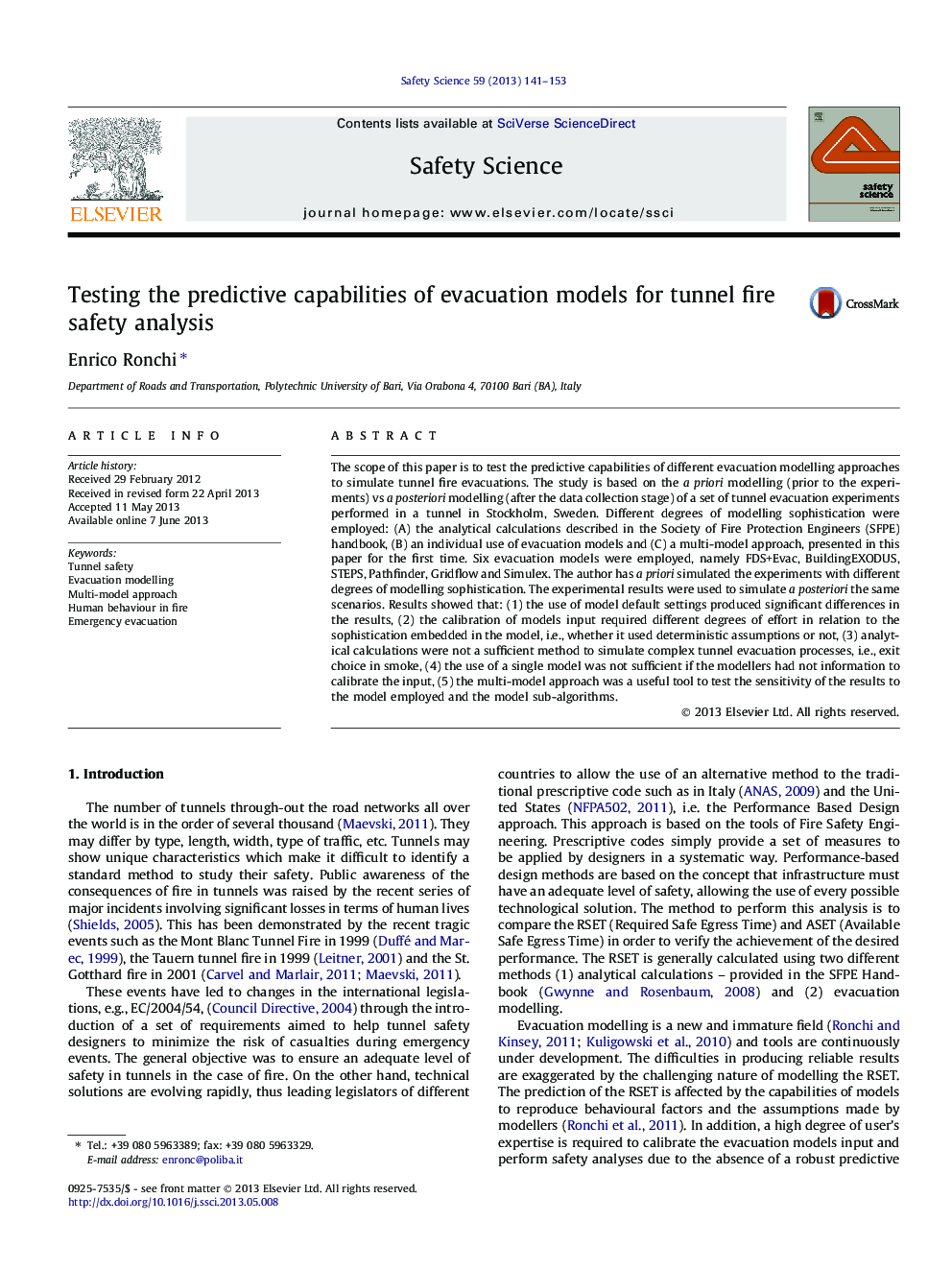| کد مقاله | کد نشریه | سال انتشار | مقاله انگلیسی | نسخه تمام متن |
|---|---|---|---|---|
| 589400 | 1453411 | 2013 | 13 صفحه PDF | دانلود رایگان |

• A priori vs a posteriori simulations of a tunnel evacuation experiment are performed using different models and approaches.
• A novel multi-model approach is presented.
• The suitability of different modelling approaches is studied through the analysis of model results.
The scope of this paper is to test the predictive capabilities of different evacuation modelling approaches to simulate tunnel fire evacuations. The study is based on the a priori modelling (prior to the experiments) vs a posteriori modelling (after the data collection stage) of a set of tunnel evacuation experiments performed in a tunnel in Stockholm, Sweden. Different degrees of modelling sophistication were employed: (A) the analytical calculations described in the Society of Fire Protection Engineers (SFPE) handbook, (B) an individual use of evacuation models and (C) a multi-model approach, presented in this paper for the first time. Six evacuation models were employed, namely FDS+Evac, BuildingEXODUS, STEPS, Pathfinder, Gridflow and Simulex. The author has a priori simulated the experiments with different degrees of modelling sophistication. The experimental results were used to simulate a posteriori the same scenarios. Results showed that: (1) the use of model default settings produced significant differences in the results, (2) the calibration of models input required different degrees of effort in relation to the sophistication embedded in the model, i.e., whether it used deterministic assumptions or not, (3) analytical calculations were not a sufficient method to simulate complex tunnel evacuation processes, i.e., exit choice in smoke, (4) the use of a single model was not sufficient if the modellers had not information to calibrate the input, (5) the multi-model approach was a useful tool to test the sensitivity of the results to the model employed and the model sub-algorithms.
Journal: Safety Science - Volume 59, November 2013, Pages 141–153